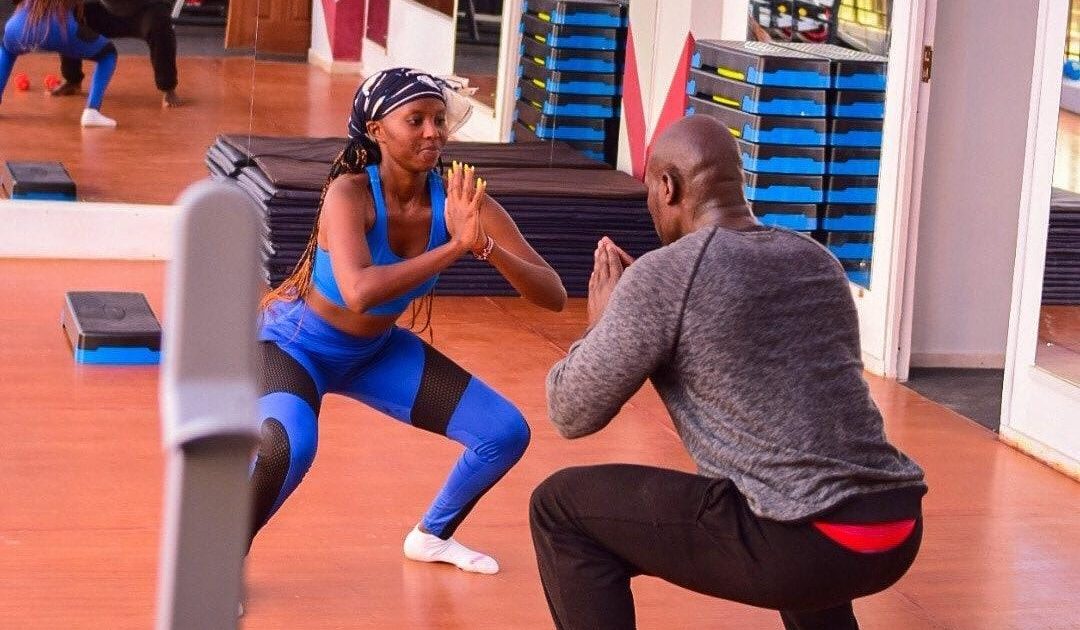- One of the most noticeable trends is the Steps challenge, where participants track their daily steps and are placed on a leaderboard with other people. The challenge dueled by social media and the fitness app Step-up has encouraged many Kenyans to keep walking and running as part of their fitness routines.
“I need to get my Steps in“ has become a common phrase among Kenyans today. It seems that wellness culture is sweeping across Kenya, with more people embracing fitness and healthier lifestyles. From the growing popularity of run clubs and the step challenge to wellness shots and mindfulness practices, it’s evident that self-care is no longer just a Western concept—it’s becoming a big part of Kenyan urban life. But is this newfound enthusiasm for wellness, or is it a social media passing trend?
A few years back, fitness was largely for athletes and bodybuilders, while wellness was considered a luxury for the privileged. However, with increased awareness and changing lifestyles, more Kenyans are integrating wellness into their daily routines.
The rise of social media influencers advocating for fitness, self-care, and mental health has played a significant role in this shift. Platforms like TikTok and Instagram are flooded with people sharing their workout routines, wellness journeys, and meal plans, inspiring others to take charge of their health.
One of the most noticeable trends is the Steps challenge, where participants track their daily steps and are placed on a leaderboard with other people. The challenge dueled by social media and the fitness app Step-up has encouraged many Kenyans to keep walking and running as part of their fitness routines. Another noticeable trend is the rise of run clubs in urban places like We Run Nairobi.
Beyond physical fitness, Kenyans are showing increased interest in overall wellness practices. The popularity of wellness shots, small, nutrient-packed drinks made with ingredients like turmeric, ginger, and lemons, has skyrocketed. We are now seeing coffee shops, cafes, and juice bars incorporating these wellness shots into their menus, prompting them as a quick immunity boost and overall healing. Additionally, Yoga and meditation are slowly gaining traction, with more people attending mindfulness retreats and wellness workshops.
The shift towards wellness is not just about physical appearance; it is also about mental wellbeing. The conversations around mental health, which was once considered taboo, are now becoming mainstream. More Kenyans are speaking openly about their struggles with mental health. Therapy is no longer seen as a sign of weakness but as an essential aspect of care. Corporations are even incorporating wellness programs for employees, offering mental health support and fitness initiatives to enhance productivity and well-being.
However, critics argue that wellness culture in Kenya is still driven by trends rather than deep-rooted lifestyle changes. The fear is that as soon as the excitement around the wellness shots, run clubs, and step challenge wears off, people will revert to their old habits. The influence of social media can also be a double-edged sword—while it inspires many to embrace wellness, it also promotes unrealistic standards, leading to pressure and burnout.
Another concern is accessibility. Wellness products and services can be expensive, making it difficult for lower-income Kenyans to participate fully. Gym memberships, organic foods, and wellness retreats remain costly, raising questions about whether wellness is truly inclusive or just another elitist movement.
Despite these challenges, there is evidence that the wellness culture in Kenya is here to stay. The shift is being driven by more than just trends—it is rooted in the growing awareness of health and well-being. The rise of lifestyle diseases such as diabetes and hypertension has forced many to rethink their habits. With increased education and digital access, Kenyans are more informed about the benefits of exercise, healthy eating, and mindfulness practices.
The key to ensuring that wellness becomes a lasting movement rather than a passing trend lies in making it sustainable and accessible. Affordable fitness programs, community wellness initiatives, and workplace wellness policies can help embed a culture of health into everyday life. Additionally, shifting the focus from aesthetics to holistic well-being will ensure that people embrace wellness for the right reasons rather than social validation.












